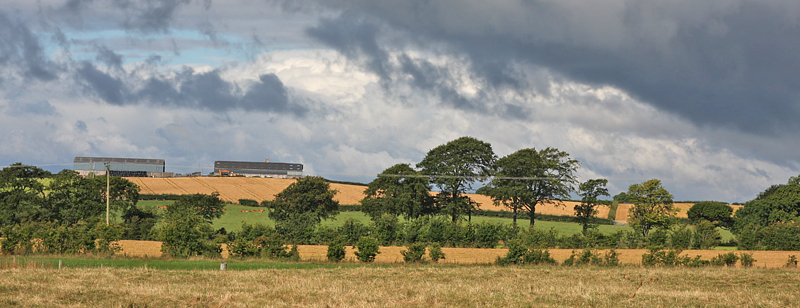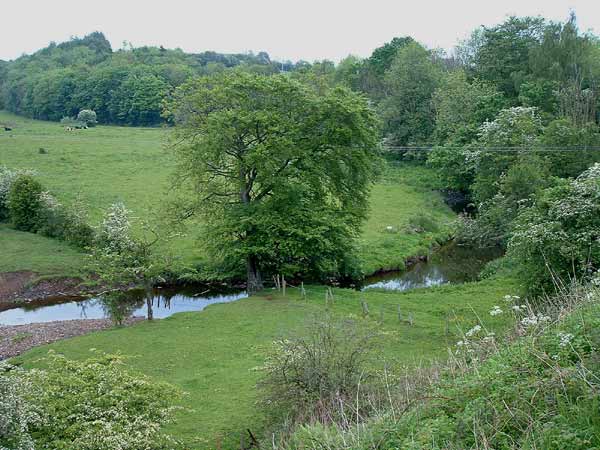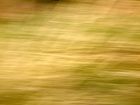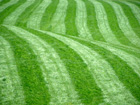|



View east
from bridge on unclassified road between West Plann
and Busbie Mains (2017)
LOCATION & ACCESS
The Knockentiber to Springside section comprises part of the former railway
line running between Kilmarnock and Irvine which closed
in 1964. I began birding here in 1990 when it had a
very much left to nature feel and the rail track
still existed between Knockentiber and Kilmarnock. It
was finally dismantled and tarmacked and opened
as a cycle path in 2003. Introduced drainage, tarmacking
and scrub clearance damaged the habitat and the Ayrshire
branch/Local Recorder of the SOC was not consulted
before this development.
Access the line from the north side of Knockentiber village on the B751 at OS grid
reference NS 400396 or the unclassified road to Kilmarnock at NS 404395. Access at the north end of Springside on Overton Road (to
Warwickdale) at NS 369391 or via the farm track (which crosses a stubble field in winter) at NS 369393 which will direct you onto the line
approximately 0.5 km east of the village. While it is a 4 km walk from end to end, the areas of greatest interest are actually around the
villages. Park in either village and walk the path in either direction. It is an ideal site to cover by bicycle. Alternatively, an unclassified road
from Knockentiber to the Cunninghamhead area crosses the line approximately half way where there is space for roadside parking on the left
after the bridge.
HABITAT
The disused railway line is a rich, semi-natural, linear habitat of overgrown hedgerow, scrub and rough grassland verges traversing some fairly
interesting farmland. The land is drained by the Garrier Burn and Carmel Water. Smaller areas include a juncus rush marsh, bramble-strewn
wasteland, nettle beds, bricks and mortar and a marshy cutting on the line (before recently introduced drainage). However, recent tarmac
'improvements' by Enterprise Ayrshire/Sustrans in the form of a cycle path have damaged much of the habitat (including the loss of a small typha
stand, the only area for orchids and Common Blue (Polyommatus icarus) breeding grassland), although hopefully within time the area will
recover. Fly-tipping, burnt-out cars, illegal shooting and unsympathetic improvements are all a problem here from time to time.
The
quality of this heterogenous landscape continues to be devalued
through farmers grubbing hedgerow and scrub and developers building
on the only field of unimproved grassland which held the last breeding
Skylarks (and pond with breeding Sympetrum).

View north
from bridge over Carmel Water towards Bailiehill Mount
(2017)

View south
from bridge over Carmel Water towards Crosshouse Hospital
(2017)

View north-west
of the Beeches (breeding Tree Sparrow & Stock Dove)
towards Warwickhill/Warwick Mains (2013)
BIRDWATCHING, TIMING & POINTS OF INTEREST
Free from busy traffic, the line offers a good vantage point to observe typical farmland birds of Ayrshire and to connect with the locally rare
Tree Sparrow. The density of breeding warblers and buntings is particularly high for the area. Average figures for the 1990's: Willow
Warbler (26 territories and upwards of 35 singing males during spring passage), Whitethroat (12 territories), Sedge Warbler (12),
Grasshopper Warbler (3-4), Blackcap (2), Reed Bunting (4-5), Yellowhammer (14). Early mornings in May and June are the most
productive months in terms of diversity and birdsong. September to December for passage, winter and more unusual species. Late winter is
rather quiet. Around 90 species has been recorded since 1991.
The following points along the line are of particular interest:
1. Heading west from the Knockentiber end, the bridge over Carmel Water at NS 403395 provides a good watchpoint for breeding warblers and
occasional Kingfisher, Bullfinch, Long-tailed Tit, and Great Spotted Woodpecker, water birds on the burn below and perhaps
Sparrowhawk and Buzzard over Bailiehill Mount to the north.
2. The area around the juncus rush marsh at NS 397398 is excellent for warblers with reeling Grasshopper Warbler, Reed Buntings, Linnet,
Goldfinch, Greenfinch and occasionally a single pair of Tree Sparrows breeding here. Grey Herons are regular here. Breeding Skylarks and
wintering Snipe occur in the field of unimproved grassland (Skylark Field)
on the other side of the line. *
Has now been destroyed for housing.
3. The cutting at NS 392397 is a good area for all the warbler species as well as Goldfinch, Song Thrush, and the common woodland birds.
Snipe are usually flushed here soon after dawn during hard weather.
4. The bridge crossing the Garrier Burn at NS 390398 provides Sand Martin, Grey Heron and Mallard during the breeding season, large
gatherings of Scandinavian thrushes in autumn and large winter parties of Magpies. Moving on, the fields on the right may have a few
Wheatears during the passage periods.
5. The line then crosses the Garrier Burn twice at NS 381397 and NS 378395 and this area holds good numbers of breeding Yellowhammers
and Grey Partridges and usually a pair of Curlews. The large, mature beeches on the right are an important area for hole-nesting species
including Tree Sparrow, Stock Dove, Jackdaw and tits. *
Scrub has been grubbed at the metal bridge (Dec 2005).
6. The gas works at NS 376393 usually has single pairs of breeding Oystercatcher and Pied Wagtail and the surrounding scrub can hold a
winter roost of Tree Sparrows.
7. The beeches around the farm track at NS 374394 have breeding Tree Sparrows and if stubble is present over the winter months the area
should be checked for mixed feeding flocks of sparrows, buntings and finches. Large numbers of Collared Doves may build up here, e.g.
110 in October 1996.

Knockentiber-Springside
disused railway line/National Cycle Route (2017)
SPECIES CALENDAR
All year: Many of the breeding residents. Grey Heron, Buzzard,
Sparrowhawk, gulls, Rook.
Spring: Warbler/hirundine passage, Meadow Pipit, Wheatear, Chiffchaff.
Breeding: Mallard, Kestrel, Grey Partridge, Quail (suspected 1997), Pheasant, Moorhen, Oystercatcher, Curlew, Lapwing,
Stock Dove, Wood Pigeon,
Collared Dove, Kingfisher, Skylark, Sand Martin, Grey Wagtail, Pied Wagtail, Dipper, Wren, Dunnock, Robin, Song Thrush, Blackbird, Blackcap, Garden
Warbler, Whitethroat, Sedge Warbler,
Grasshopper Warbler, Willow Warbler, Great Tit, Blue Tit, Long-tailed Tit, Magpie, Jackdaw, Carrion Crow, Starling, House Sparrow, Tree
Sparrow, Chaffinch, Linnet, Goldfinch, Greenfinch, Bullfinch, Reed Bunting, Yellowhammer.
Summer: Breeding species. Swift, Swallow and House Martin overhead.
Autumn: Skylark and Meadow Pipit passage, thrush passage, Goldfinch flocks, Wheatear, Spotted Flycatcher, Larid flocks,
dispersing juvenile Kingfisher.
Winter: Pink-footed
Goose and Greylag Goose occasional on stubble, Snipe, Kingfisher,
Great
Spotted Woodpecker, Grey Wagtail, Redwing, Fieldfare, Goldcrest, Coal Tit, Long-tailed Tit (flocks), Treecreeper,
Siskin, Redpoll (occasional), mixed flocks of
Tree Sparrow (inc. roost), finches and buntings, Corvid flocks and Great Spotted Woodpecker.
Occasional/scarce species recorded: Cormorant (o/h), Whooper Swan, Goosander,
Teal, Peregrine, Merlin, Jack
Snipe, Woodcock, Quail, Water
Rail, Iceland Gull, Golden Plover, Cuckoo, Tree Pipit, Waxwing, Whinchat, Mistle Thrush, Jay,
Hooded Crow, Brambling.
OTHER WILDLIFE
Sixteen species of butterfly have been recorded including Grayling, Orange Tip, Small Heath and Clouded Yellow. Common Darter dragonflies are abundant (August to October) at the Knockentiber end,
with occasional Migrant Hawker in late summer/early
autumn. Otter and Roe
Deer can be sometimes be seen around
dawn and dusk.
It is also interesting for flowering plants.
Surely this green corridor for wildlife should have some sort of conservation status as it deserves to be
protected from further degredation.
 
Tree
Sparrow (Passer montanus) Yellowhammer
(Emberiza citrinella)
 
Point
1. View from bridge over Carmel Water (2002) -
Point 6. View along the line from Springside (2002
  
Point
3. Old cutting (2002) - View from the bridge on
the unclassified road (2002) - Point 5. Mature
Beeches (2002)
 
NB
Recent changes to Point 2 > The Skylark field (R)
has been trashed for housing & hedgerow grubbing
& drainage
has damaged the juncus rush field (L.) (2007)
Where
to Watch Birds in Scotland - SOC's free mobile app


Home
|
Trip
Reports
| Recent
Sightings
| Blog
| Photographs
|
Phonescoping
| Sounds
& Sonograms
| Sketches
| Patches
| Butterflies & Dragonflies
About
| A-Z
Index |
Search
this Website
| Links |
Ayrshire
Bird Report
| Ayrshire
Bird Race | Biking
& Birding to Work |
Scarlet
Banded-Barbet | Blog
Index
| Cycling
| Ambient
All
photographs © F. S. Simpson
Fraser's
Birding Website · fssbirding.org.uk
|
|























